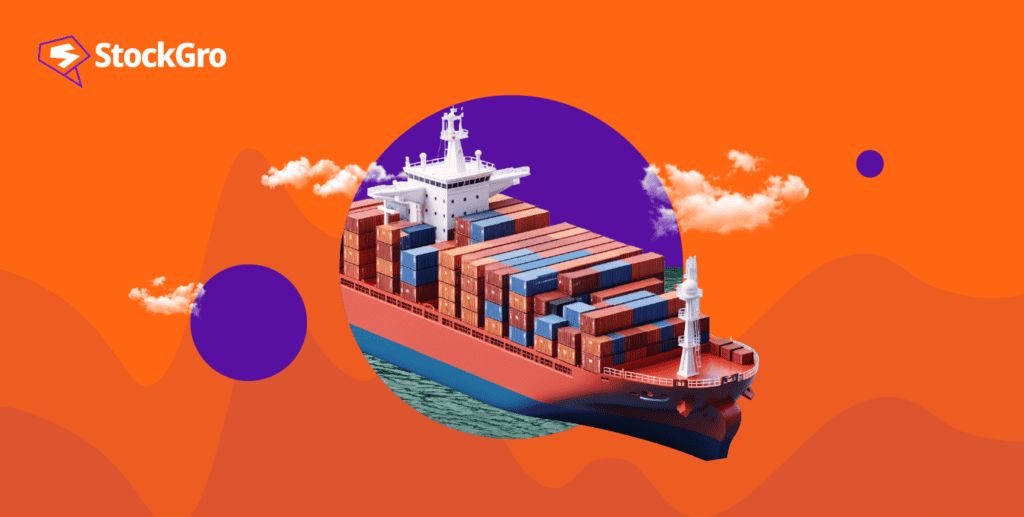
There are more than 200 ports spread out along India’s coastline, which is more than 7,517 km. Today India does about 95% of its trade by volume and 70% by value through maritime transport, as the Ministry of Shipping reported. In November 2020, Prime Minister Narendra Modi changed the Ministry of Shipping’s name. It is now called the Ministry of Ports, Shipping, and Waterways.
The nation’s trade and commerce are supported significantly by India’s ports and shipping sector. In April-March 2022-23, 8.8 million tonnes more cargo passed through India’s 12 major ports than in April-March 2021-22, when 720.29 million tonnes of goods passed through.
The Indian government also provides extensive support for the port industry. Under the automatic route, it has permitted up to 100% of Foreign Direct Investment (FDI) in port and harbour development and maintenance projects.
In today’s article, we will look at India’s shipping and port industry closely, with a focus on its current growth scenario and future outlook. Let’s begin!
You may also like: Fueling India’s growth engine: Evolution and outlook of oil & gas industry
What is the shipping and port industry in India?
The business of transporting goods is referred to as “shipping.” Despite its name, this phrase refers to the transfer of products by any kind of transportation from one location to another.
The effortless transfer of commodities and products from one nation to another is essential to operate an international trade-based economy. In simple terms, intercontinental commerce would only be feasible with the shipping and port sectors.
India is about to join the club of economies worth more than USD 5 trillion. India is among the top five producers and consumers of all essential commodities, including wheat, coal, crude oil, and more. This means that India has to become more globally linked and competitive. A higher number of ships operating in the Indian market might facilitate the necessary link.
Union Minister of Ports, Shipping & Waterways Sarbananda Sonowal said while speaking at the Global Maritime India Summit (GIMS) 2023 that investment prospects in India’s marine industry have been found at over ₹10 trillion.
Looking back at the ship-breaking industry in India
Ship-breaking is the procedure of dismantling a ship that is no longer safe to sail. India has a worldwide market share of over 30% in the ship-breaking sector as of 2021, and its Alang location is home to the biggest ship-breaking facility globally. In India, the shipbreaking industry first gained traction in Mumbai and Kolkata.
After that, shipbreaking started in many other ports, but gradually, those ports stopped. One of the biggest ship-breaking yards in the world right now is the Alang Ship Breaking Yard in Gujarat. It’s said to scrap almost half of the world’s ships.
Ship breaking is a laborious procedure that involves several technical concerns, including worker health and security, the environment, and safety. Since vessels often transport explosive resources like oil and gas, a great deal of risk is involved.
Alang Yard meets 98% of India’s ship recycling needs. Over 15,000 people are directly employed by the ₹5,000 crore shipbreaking sector, while many more are employed indirectly. However, the number of ships arriving has dropped to a decadal low despite strong efforts by the state and federal administrations to double the ship-breaking capacity at Alang-Sosiya.
Also read: Textile industry in India – The foundation of fashionable clothing trends/
Market today: Government initiatives for the shipping industry in India
From April to January of 2023, the capacity of India’s primary ports was 646.10 million tonnes per year (MTPA). All of India’s major ports managed 446.50 million tonnes of cargo traffic between April and October of 2022. India exported $417.8 billion worth of goods in FY22, a 40% increase over FY21. Exports of goods were US$ 447.46 billion in FY23.
The government of India has also implemented several fiscal and non-fiscal incentives for companies that build, supervise, and operate ports, inland waterways, and maritime facilities in the country to boost the country’s shipping and port industries.
To promote port-led development and the expansion of sectors requiring a lot of logistics, the government introduced the expansive Sagar Mala Programme in 2017. A total of $123 billion will be spent on more than 400 projects under the programme.
Over 150 projects have been identified by the Maritime India Vision 2030 to strengthen the Indian marine industry. In March 2021, the Honourable Prime Minister of India announced the Vision 2030. The vision outlines over 150 programmes that address every aspect of India’s marine industry and act as a roadmap for the country’s diversified maritime sector to flourish faster and more coordinated.
Sagar Mala and Maritime India Vision have the same goal of creating employment, with a target of 2 million employment opportunities, both direct and indirect, by 2030 and of unlocking greater potential, such as an annual income of $2.7 billion from current assets.
The future outlook of the shipping and port industry in India
An optimistic future for the Indian port industry seems to be indicated by rising investment and cargo volume.
Over 574 projects, totalling US$ 82 billion, have been proposed for execution as part of the Sagarmala project, with a target completion date of 2035. Domestic waterways are also an economically and ecologically responsible means to move goods. For this reason, by 2030, the government wants to operationalise 23 canals.
The National Action Plan for Green Shipping also encourages eco-friendly ship operations. It offers incentives for low-emission ships, setting up the Indian maritime industry for both economic success and environmental responsibility.
Also read: The role of the energy sector in powering India’s growth./
Top shipping companies in India
Below is a list of top companies in the shipping industry ranked by market capitalisation on BSE (as of December 12, 2023)
| Company | Last price (₹) | Market capitalisation (₹ cr) | Net profit (₹ cr) |
| GE Shipping | 877.70 | 12,582.78 | 2,352.01 |
| Shipping Corp | 157.50 | 7,545.94 | 800.12 |
| Seamec | 954.85 | 2,374.19 | 41.28 |
| Essar Shipping | 26.97 | 541.45 | 1,692.71 |
| Global Offshore | 43.15 | 106.33 | 172.00 |
Conclusion
The nation’s maritime industry is closely related to its economic trade. As trade expands and diversifies, the need for maritime and trade infrastructure will increase too, creating a strong argument for the quick and effective development of India’s shipping and port industry.

